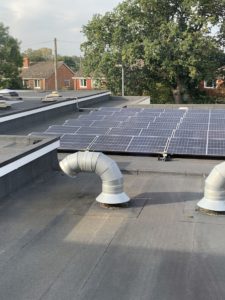Last year, RICS released the second edition of its Whole Life Cycle Carbon Assessment Standard. Read on for our overview and find out how this could impact you.
Towards the end of last year, The Royal Institution of Chartered Surveyors (RICS) launched the second edition of their groundbreaking Whole Life Carbon Assessment for the Built Environment (WLCA) standard.
First launched in 2017, WCLA are a comprehensive approach to evaluating a building’s environmental impact, exploring carbon emissions throughout its life cycle; all the way from construction to demolition. Fast forward to March 2023 – and a public consultation which received over 1,300 responses – and the Whole Life Cycle Carbon Assessment Standard has been updated to be used globally, covering all built assets and infrastructure projects throughout the built environment lifestyle.
But, what is whole life cycle carbon and how has the new edition to the RICS standard changed the assessment?
What is Whole Life Cycle Carbon?
The Whole Life-Cycle Carbon footprint of a building encompasses a comprehensive sum of impacts throughout its entire existence. The assessment method for building the life cycle of carbon footprint is defined by the European CEN/ TC 350 Sustainability of construction works family of standards. This includes accounting for numerous stages, including:
- Material extractions
- Manufacturing processes
- Transportation
- Construction works
- Maintenance
- Repairs
- Replacement of materials during the building’s life cycle
It includes the consumption of energy and water during the building’s operational phase, and lastly the processes involved in the demolition and end-of-life processing of building materials.
RELATED: WHAT IS THE WHOLE-LIFE CYCLE CARBON ASSESSMENTS GUIDANCE?
How has the Whole Life Cycle Carbon Assessment changed?
The 2nd edition of the Whole Life Cycle Carbon assessment builds upon the success of the existing RICS WLCA standard: it now covers all buildings and infrastructure across the built environment life cycle.
Utilising the WLCA standard, assessors can estimate the amount of carbon emitted throughout the life cycle of a constructed asset: from early stages development through to end of life. It shines a light on embodied carbon, operational carbon, and user carbon. Furthermore, the latest edition includes an extended breakdown on life cycle stages, new categorisation for infrastructure projects, a data quality methodology and new reporting templates. Add in greater clarity to some of the areas in the 1st Edition (such as MEP, decarbonisation, renewables and carbonation) and the industry has a really strong, detailed set of guidelines to adhere to.
Aims of this new edition include helping to manage carbon budgets, reducing lifetime emissions and delivering a net-zero future for the built environment.
RICS Chief Executive, Justin Young, said: “The second edition of Whole Life Carbon Assessment for the Built Environment encapsulates RICS’s role as a global leader in the built environment and its duty to steer the industry towards decarbonisation.
“This second edition is a truly global standard for a global problem. I want to thank our members from every world region, our staff, partner specialists and the Department for Transport and Net Zero Waste Scotland for their hard work and crucial support, which made this a reality.”
The new standard is effective from the 1st July 2024 and can be downloaded here.
Can Buildpass help me with the new WCLA standards?
Here at Buildpass, we are experts in sustainable building practices, including Whole Life-Cycle Carbon Assessments. Our team is here to support and guide you through the process, helping you make informed decisions that align with your environmental goals and financial objectives. Book a call with us today and let’s get things moving.





















